Does hawker culture have a future in Singapore? Yes, but perhaps not as we know it
With hawker culture set to be listed in UNESCO's intangible cultural heritage list, CNA takes a look at the challenge of getting a new generation to embrace the trade - not just the food.
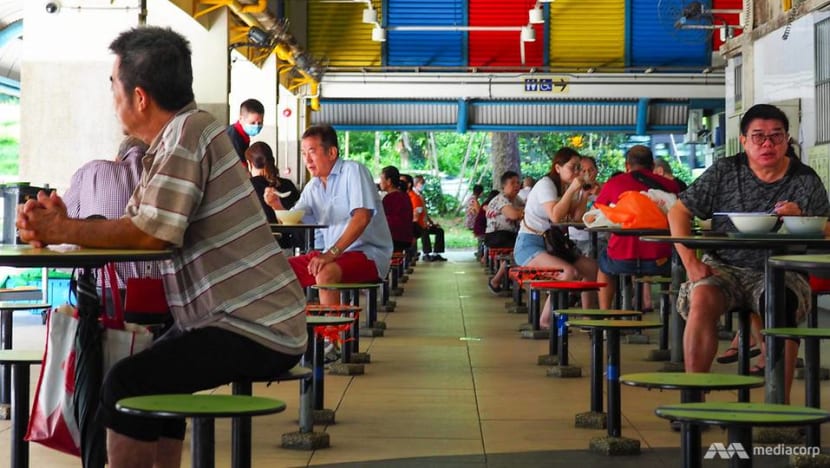
Patrons dining at Block 11 Telok Blangah Crescent Market and Food Centre.
SINGAPORE: Mr Syed Habeebullah’s father used to sell mee siam on the streets from a tricycle. He and his son now run an Indian cooked food stall at Block 11 Telok Blangah Crescent Market and Food Centre.
“I’ve been at this hawker centre since 1974, my father got the licence on November 16, 1974,” he said with pride.
He beamed when asked about the likely inscription of Singapore’s hawker culture on UNESCO’s intangible cultural heritage list.
“It’s very good for Singapore’s name,” he said, but went on in the same breath to say that not many young Singaporeans want to become hawkers nowadays.
READ: Singapore hawker culture a step closer to being on UNESCO intangible cultural heritage list
Commentary: Hawker food isn't what it used to be. And it’s partially our fault
Even as Singapore’s hawker culture is poised to be inscribed on the UNESCO list next month - formal recognition that it’s a living culture worth safeguarding - some say that it’s hard to keep the traditions and tastes alive as Singapore develops.

Chef Damian D’Silva, an advocate for heritage food, said that this is potentially “just another accolade” for Singapore.
“Is it going to change what I think about hawker food? To be really honest with you, no. Because, because at the end of the day, right, it's a living … The only thing that I think is good for Singapore is that it encourages the younger generation,” he said.
But he lamented that hawker food is changing and that some dishes that take time, effort and skill to make are in danger of disappearing.
“Char kway teow is an art, you need to fry it for 10, 15 years before you become a master. You need to know when to add the egg in, when to throw water in, when to turn the heat up or when to turn the heat down ... everything is timing,” he said.
“It's not about just getting awards, it is about preserving food that we see disappearing in three, five, 10 years’ time, because we don't want to lose this, I don't want to lose this.”
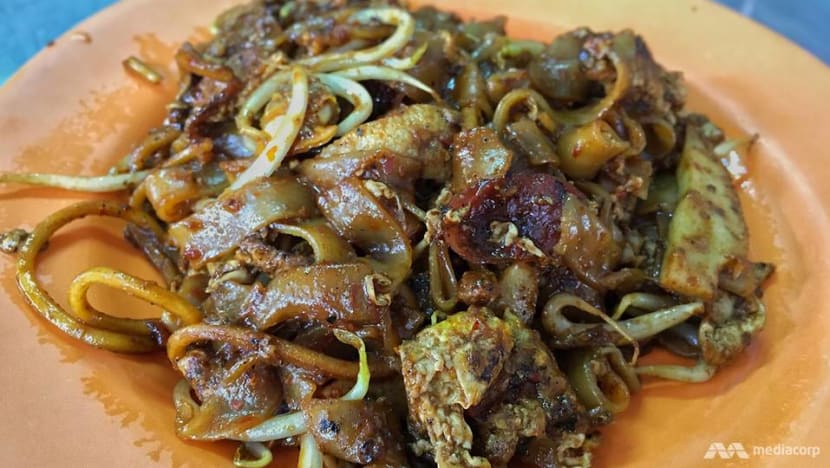
Food writer Annette Tan said that hawker culture is “a part of who we are”, but thinks that it’s inevitable that it will evolve with the times.
“I think it makes me very proud that something we cherish and something that is so much a part of our lives is recognised,” she said.
“But as times change, ingredients change, techniques change … Hawker food won't disappear because it's just so much a part of the fabric of our lives, but the quality that we are used to in the hawkers - that may change.”
She added: “But with everything that disappears, something new comes and replaces it.”
Hawker culture has already evolved with successive generations of Singaporeans. Decades ago, the ubiquitous hawker centres the island is known for were built to house itinerant peddlers who fed the masses as they sat on footstools by the road.
That worked when many families lived in kampungs and shophouses, but with new public housing came hawker centres and markets - where much of Singapore’s hawker fare now thrive in the form of traditional dishes or upstart fusion chow.
More change can be expected, those CNA spoke to said, as young people today are better educated, have better job opportunities and want something more than to make a basic living.
READ: Nearly a third of hawker stalls in Singapore offer e-payment
Mr Anthony Low, who chairs the hawker division of the Federation of Merchants’ Associations (FMAS), left the Singapore Armed Forces 23 years ago to run his father’s ngoh hiang stall. He was 29 then, and no one else would take up the mantle, he said.
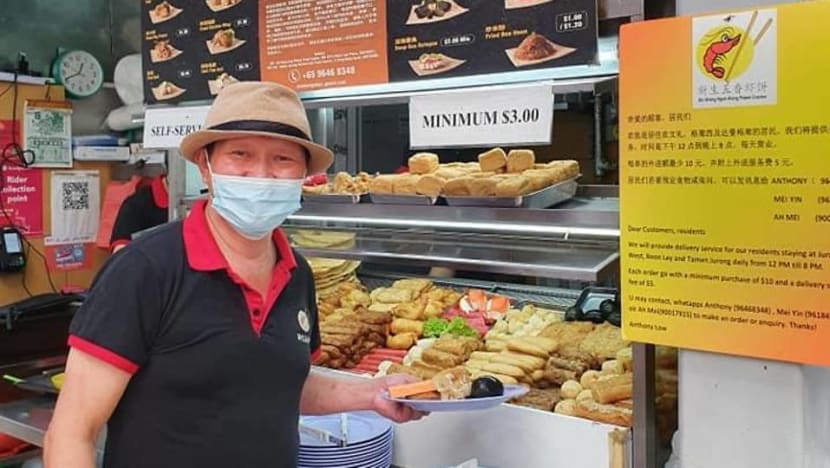
Now a veteran hawker with two stalls in Jurong and another one coming up at Chinatown Food Street, he recalled how he had felt “paiseh” (embarrassed in Hokkien) to serve his former colleagues at his food stall. But things are different now, he said.
“The UNESCO nomination is an affirmation for us, I think people saw hawking as a lowly occupation … but in recent years, the reputation has improved,” the proprietor of Xin Sheng Ngoh Hiang Prawn Crackers told CNA.
“It feels like our hard work behind the scenes to make our food better is being recognised.”
While an earlier generation of hawkers laboured over hot woks and open flames out of necessity, a new generation of “hawkerpreneurs” come armed with business plans and modern culinary chops.
“I believe that young people, when they come into the trade, they also want to achieve something. They are not satisfied with running just one stall,” said Mr Low, who is 52. “They have ideas, they want to build a business and even aim to expand overseas.”
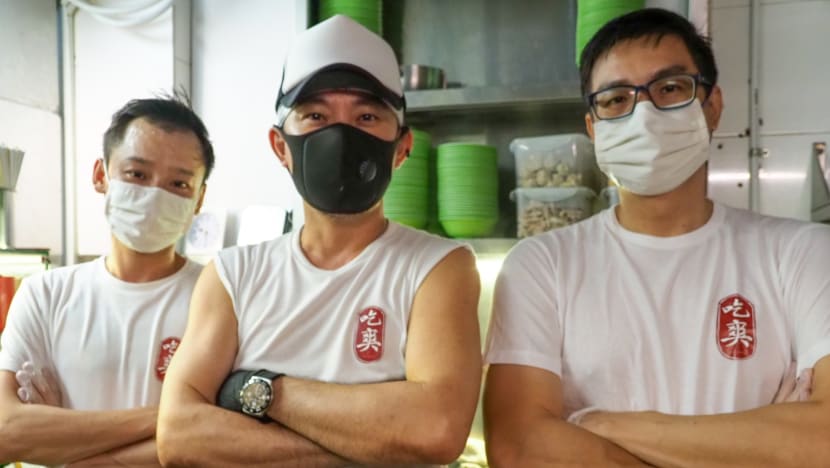
Jiak Song, Masterchef contestant Aaron Wong’s hawker stall at Telok Blangah, serves a humble bowl of mee hoon kueh for S$3.50 to S$5, and it has attracted long queues since opening in August.
While back-breaking hours are a common complaint among hawkers, Mr Wong said that his team can prepare all the ingredients for the day in two hours - even with custom-made dough, meatballs and prawn balls. His stall helpers start work at 7am, they sell out 250 bowls by 2pm and leave by 4pm, he said.
He believes it’s possible to blend traditional tastes and a more streamlined system of operations to make selling hawker food more palatable to a new generation.
“I think it’s not about reinventing the food - we like our wanton mee the way it’s been since the dawn of time. I think the thing that needs to be reinvented is the way a hawker stall is operated,” he said.
Showing this reporter around his tiny kitchen, he demonstrated how an insulated boiler and induction cookers make the stall more comfortable and safer to operate in, and all the ingredients are neatly organised.
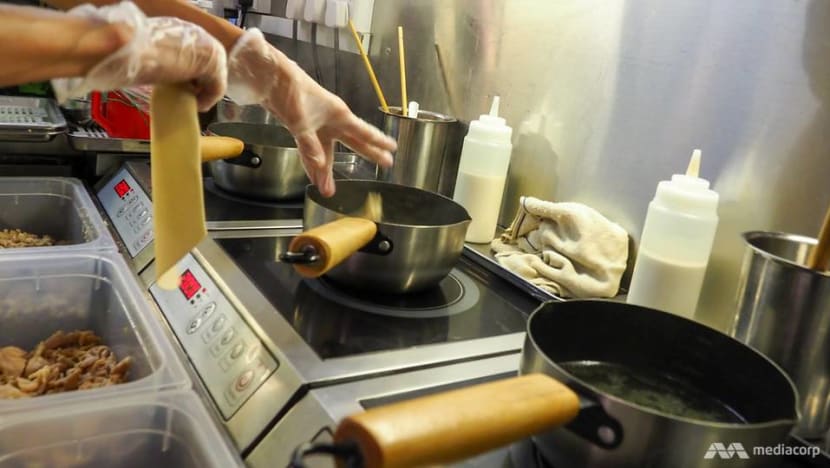
“These systems are not new things, they’ve been used by restaurants for a long time. It’s about incorporating them into a hawker stall,” he said. He already has plans to open a few more stalls and a central kitchen.
While Mr Wong’s stall has only been operating for a few months, he’s also taken on a mentee under the National Environment Agency’s (NEA) Hawker Development Programme.
READ: Aspire to be a hawker? Here's a new programme that may pave the way
READ: New training programme, enhanced incubation stall programme to support aspiring hawkers
Close to 150 participants have completed training under the programme, of which 50 have moved on to apprenticeships and 35 participants are going on to start incubation stalls. These stalls come fitted with basic equipment and rental rebates for the first 15 months of operation.
These recent programmes aim to train aspiring hawkers, paving an easier way into a trade that has traditionally been passed down to family members. While the median age of hawkers is 59 years old, the median age of new entrants since 2013 is 46 years old, NEA said.
But with the UNESCO listing in sight after two years, more can be done to keep hawker culture brewing, those in the industry said.
“Getting awards won’t mean much unless we do something about it - if the Government takes advantage of this and looks at all the peripheral and the related opportunities this can bring,” said Makansutra founder KF Seetoh.
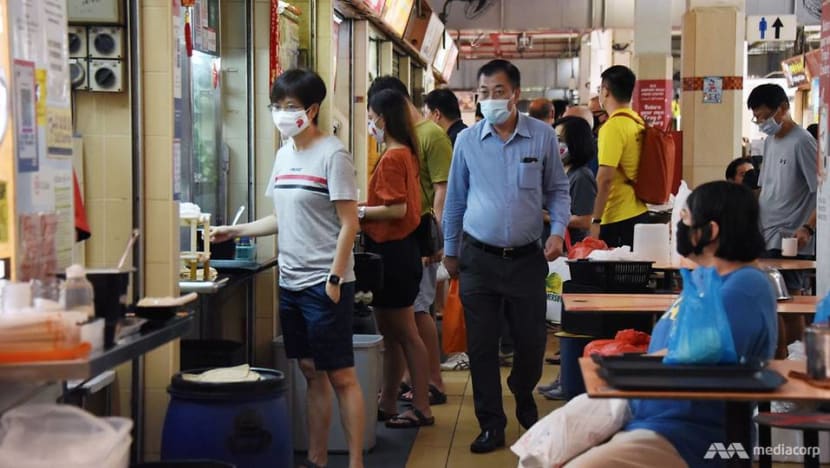
Singapore hawker food can be promoted around the world, he said and he hopes that the authorities will see merit in supporting hawkers who want to venture abroad: “The possibilities will be immense.”
Mr Low of FMAS proposed having a hawker appreciation day or month to recognise stalwarts, while Mr D’Silva suggested that the hawkers that truly stand out be given “a fair rent”.
Dr Wong King Yin, a tourism and marketing lecturer from Nanyang Technological University’s Nanyang Business School, said that while the UNESCO listing will not have an immediate impact on food businesses, it can have a lasting impact on how Singaporeans identify themselves.
“I think the value is more about how the hawker culture can connect every Singaporean and gives everyone the sense of belonging,” she said.












